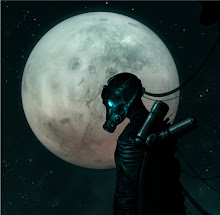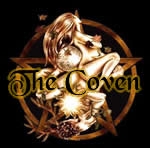
Origins of Aromatherapy
The use of fragrance goes back thousands of years. Originally, people used herbs, and the oils derived from them, directly as a part of their spiritual or religious practice, and often, more indirectly as medicines.
Aromatherapy and More
It is relatively simple to burn the actual herbs themselves, when using the herbs as incense. Or to release the scent of the herbs, by pouring boiling water over them, to produce a tea, infusion, tisane or steam inhalation. If a plant grows in your locality, you can probably prepare it for these types of use.
However, the use of essential oils is more complicated because one doesn’t just use the raw herb itself.
In most instances, the ancient world's use of botanicals did not include the use of actual essential oils. Rather, instead, many of the ancients used fats and oils infused with plant materials.
The Term "Aromatherapy"
In the 1900s, a French chemist, Professor Rene-Maurice Gattefosse, is credited with coining the term "Aromatherapy." His family owned a perfumery business. As he defined it, aromatherapy carries a somewhat narrow definition in the respect that it only includes essential oils, not other botanical products, which may or may not be considered a formal part of aromatherapy.
History
"To reach the individual we need an individual remedy. Each of us is a unique message. It is only the unique remedy that will suffice. We must, therefore, seek odiferous substances which present affinities with the human being we intend to treat, those which will compensate for his deficiencies and those which will make his faculties' blossom."
--- Marguerite Maury. "The Secret if Life and Youth".
Aromatherapy is a multifaceted healing art, which uses the essential oils of plant and trees to promote health of body and serenity of mind. Although the roots of this beautiful therapy are ancient, I have set out to prove that the basic principles on which aromatherapy is based are no less valid today.
Aromatic plants have been used by humankind since the dawn of history. There is evidence that over some 4,000 years ago, the Ancient Sumerians made use of the scented herbs such as cypress and myrrh, while in the 1870's George Ebers discovered a 21 meter scroll of papyrus that listed over 850 Ancient Egyptian botanical remedies, dating from about 1500 BC.
Ancient Greek Physicians such as Hippocrates and Galen interpreted the microcosm of the human being according to the Elements of Fire, Water, Earth, and Air, while the masters of the Chinese tradition saw five elements at work. In either case, they employed a rich and varied language of Nature - not to describe their observations as fixed phenomena, but like the physicists of today, to use these concepts to expose the dynamic force that masquerades as matter.
Aromatherapy also has a few intriguing diversions, such as the art of natural perfumery, the making of cosmetic lotions and potions, and an exploration of sensual aromatherapy - for those wishing to enhance their love life through the alchemy of fragrance and the magic of touch.
Practices such as these were the beginnings of a tradition that embraced not one but several civilizations, and developed hand-in-hand with systems of science and medicine that were based on both empirical knowledge and informed intuition
By applying traditional wisdom to aromatherapy, we can avail ourselves of a corpus of knowledge that is immediate and profound, practical and intuitive. And through contributing to the synthesis of East and West, we can expand our awareness both of the human spirit and the plant essence.
War Time Uses of Essential Oils
Gattefosse experimented with essential oils on wounded soldiers during World War I. His work showed that essential oils, rather than chemical antiseptics, detoxified wounds and sped up healing.
His own personal experience with the healing properties of lavender made him a fan of that oil. He accidentally burned his hand in his laboratory when an experiment caused a small explosion. After he applied lavender oil, the pain ceased and (according to aromatherapy legend) the skin soon healed, perfectly cured.
This seems the perfect place to discuss one of Gattefosse’s favorite oils and a few of the ways you can best use it. Of course, we are talking about Lavender essential oil.
Take out your notebook and bottle of lavender essential oil. Put one drop on a tissue paper and inhale its scent. (Inhaling directly out of the bottle may be too intense.) Before you read further, consider the following questions and note your responses in your notebook. Be sure to list the full name of the essential oil as well as the day and date of your notations.
Now, consider the following: How were you feeling before you sniffed the oil? How are you feeling now that you have sniffed the oil? Do you like the scent? Why? Why not? Once you have written down each question and your responses, continue reading.
Lavender, Lavendula angusifolia
An antiseptic essential oil, lavender has found its niche in the treatment of burns, whether as a result of a kitchen or camping accident, or spending too much time at the seaside or hiking in the mountains.
Just a couple of drops of lavender essential oil mixed into a teaspoon of aloe vera gel makes a soothing, antiseptic and pain relieving lotion which not only relieves the pain of a burn, but also speeds up the healing process.
A few drops in a tea light diffuser at night before bedtime can help an insomniac relax and have sweet dreams.
Lavender essential oil also has a reputation for helping stressed out individuals calm down and take life a little slower. In essence, it helps them to stop and smell the flowers.









































No comments:
Post a Comment